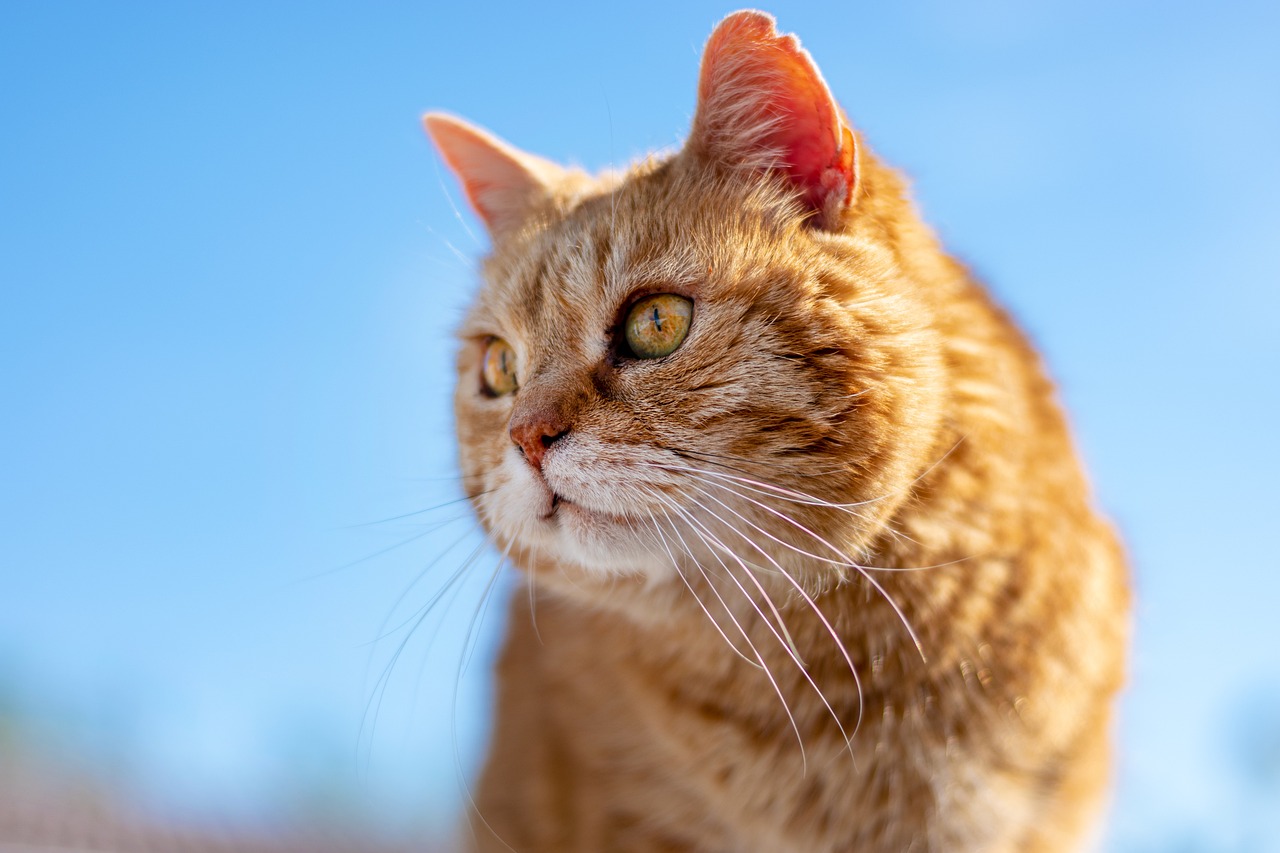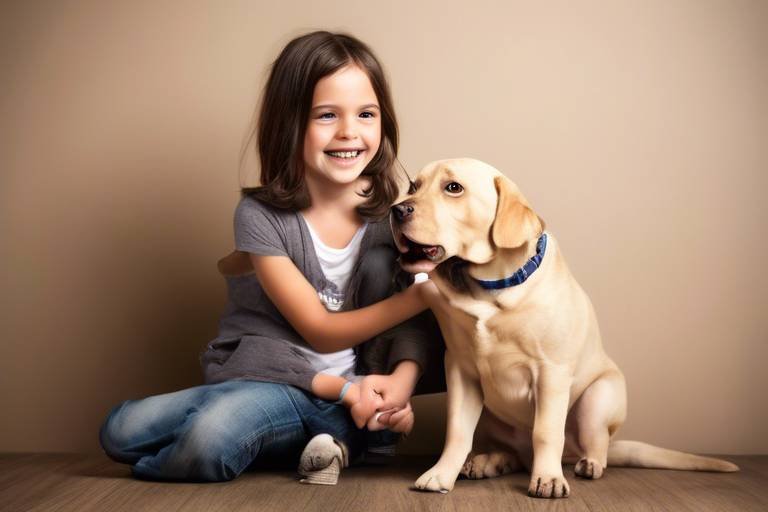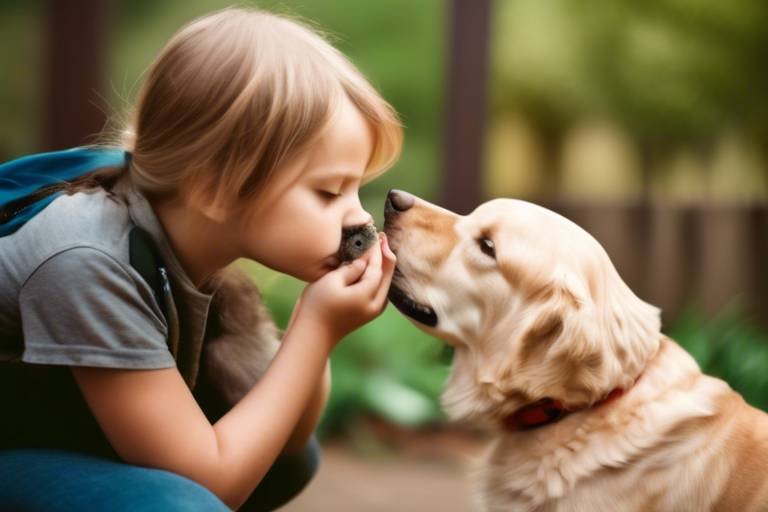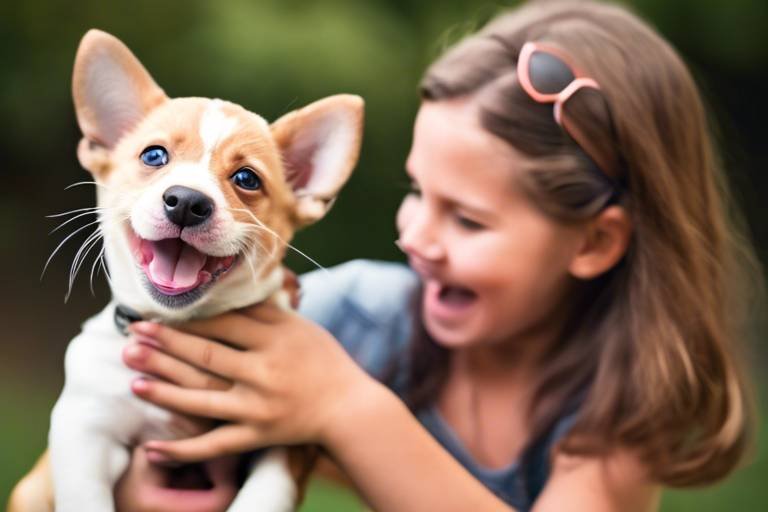The Impact of Social Media on Pet Adoption Rates
In today's digital age, social media has become a powerful tool that shapes many aspects of our lives, including the way we adopt pets. With millions of users scrolling through their feeds daily, platforms like Facebook, Instagram, and Twitter have emerged as pivotal channels for animal shelters and rescue organizations to connect with potential pet owners. This article delves into the profound influence of social media on pet adoption rates, highlighting the trends, success stories, and the vital role these platforms play in bridging the gap between shelters and loving homes.
The reach of social media is nothing short of astonishing. Imagine a world where a simple post can reach thousands, or even millions, of people within minutes. For animal shelters, this means that a single heartwarming photo or an engaging video of a furry friend can capture the attention of potential adopters far and wide. Social media allows shelters to showcase not just the pets available for adoption but also the emotional stories behind each animal. This connection often stirs empathy and encourages people to consider adopting rather than buying pets.
Moreover, social media provides a platform for shelters to share success stories. When a pet finds its forever home, the joy doesn't just end there; it gets shared, liked, and commented on, creating a ripple effect. People love to see happy endings, and these stories can inspire others to take action. For instance, a post about a dog who was rescued from a difficult situation and later adopted can resonate with many, prompting them to visit their local shelter. The emotional weight of these narratives often outweighs traditional advertising methods, making social media a unique asset in promoting pet adoption.
Another significant aspect of social media's impact is the rise of pet influencers. These are individuals or accounts dedicated to sharing their lives with pets, often amassing large followings. They wield considerable influence and can sway public opinion towards adopting shelter pets. By showcasing their own rescue animals, they not only promote the joy of pet ownership but also advocate for adopting over purchasing. This has led to a noticeable shift in how people perceive pet adoption, making it a trendy and socially responsible choice.
As we explore the case studies of influencer campaigns, it becomes evident that their reach can lead to substantial increases in adoption rates. For example, when a popular pet influencer shares a post about a specific animal in need of a home, it can lead to a surge in inquiries and applications. These campaigns often involve creative storytelling, engaging visuals, and a call to action that resonates with their audience. The emotional connection that influencers build with their followers fosters a community that actively discusses and promotes responsible pet ownership.
However, while social media presents incredible opportunities for shelters, it also comes with its own set of challenges. Misinformation can spread like wildfire, leading to misconceptions about certain breeds or the adoption process itself. Shelters must be proactive in combating this by providing accurate information and debunking myths. This involves not only posting factual content but also engaging with followers to clarify doubts and provide guidance on responsible pet ownership.
Additionally, the limited resources that many shelters face can hinder their ability to maintain a robust online presence. Running effective social media campaigns requires time, creativity, and sometimes financial investment. Many shelters operate on tight budgets, making it essential for them to strategize and prioritize their outreach efforts. Partnering with local businesses and leveraging community support can help amplify their message and reach a wider audience.
In conclusion, social media has undeniably transformed the landscape of pet adoption. It has created new pathways for shelters to connect with potential adopters, share success stories, and advocate for responsible pet ownership. As we continue to navigate this digital age, the collaboration between shelters, influencers, and the community will be crucial in ensuring that more pets find their forever homes. The journey of a pet from shelter to family is not just a story; it’s a movement fueled by the power of connection, compassion, and community.
- How does social media increase pet adoption rates?
Social media increases pet adoption rates by providing shelters a platform to showcase adoptable pets, share success stories, and engage with potential adopters in real-time.
- What role do pet influencers play in adoption?
Pet influencers use their platforms to raise awareness about shelter pets, advocate for adoption, and inspire their followers to consider adopting rather than purchasing pets.
- What challenges do shelters face on social media?
Shelters face challenges such as misinformation, limited resources, and the need for consistent engagement to maintain interest in adoptable pets.
- How can shelters combat misinformation?
Shelters can combat misinformation by providing accurate information, engaging with their audience, and creating educational content about pet adoption and care.

The Rise of Social Media in Animal Welfare
Social media has become a revolutionary tool in the realm of animal welfare, acting as a bridge between shelters and potential adopters. Gone are the days when animal shelters relied solely on traditional advertising methods like flyers and local newspapers. Now, with just a few clicks, shelters can reach thousands, even millions, of potential pet owners. This shift has not only increased visibility for adoptable pets but has also fostered a sense of community among animal lovers.
Platforms such as Facebook, Instagram, and Twitter have opened up new avenues for shelters to share their stories, showcase their animals, and engage with the public. For instance, a single post featuring a lovable pup can go viral, reaching individuals who may never have considered adoption before. It’s like casting a wide net in the vast ocean of social media, where the right post can hook a compassionate heart ready to adopt.
Moreover, social media allows shelters to share real-time updates about animals in their care. This immediacy can create a sense of urgency that encourages potential adopters to act quickly. When people see a post about a dog who has been waiting for a home for months, it tugs at their heartstrings and often prompts them to take action. The emotional connection formed through these shared stories is invaluable.
In addition to showcasing adoptable pets, social media serves as a platform for educational content. Shelters can provide useful information about responsible pet ownership, the importance of spaying and neutering, and tips for integrating a new pet into the home. By educating the public, shelters not only promote adoption but also ensure that pets are placed in loving, knowledgeable homes.
Furthermore, social media has democratized the way shelters operate. Smaller, less-funded shelters can now compete for attention alongside larger organizations. A compelling story or an adorable photo can level the playing field, allowing every shelter to have a voice. This has led to a more equitable landscape in animal welfare, where every pet has a chance to find their forever home.
To illustrate the impact of social media on pet adoption rates, consider the following table that highlights the growth in adoptions linked to social media campaigns:
| Year | Adoptions via Social Media | Total Adoptions |
|---|---|---|
| 2018 | 1,200 | 10,000 |
| 2019 | 2,500 | 12,000 |
| 2020 | 4,000 | 15,000 |
| 2021 | 6,500 | 18,000 |
| 2022 | 10,000 | 25,000 |
This table clearly shows a significant increase in adoptions attributed to social media outreach, showcasing its effectiveness as a tool for animal welfare. The statistics speak volumes; as more shelters embrace social media, more pets find loving homes.
In conclusion, the rise of social media in animal welfare has transformed how shelters connect with the community and promote pet adoption. It’s a game-changer that not only enhances visibility but also fosters education and community engagement. With every post shared, every story told, and every adorable pet featured, the potential for finding homes for shelter animals grows exponentially. The digital age has proven to be a powerful ally in the quest for animal welfare.
Q1: How can I help my local shelter with their social media efforts?
A1: You can volunteer to manage their social media accounts, share their posts, or even create engaging content that highlights adoptable pets.
Q2: What types of content are most effective for promoting pet adoption on social media?
A2: Heartwarming stories, before-and-after photos of adopted pets, and engaging videos showcasing pets' personalities tend to resonate well with audiences.
Q3: Can I adopt a pet directly through social media?
A3: While you can find adoptable pets on social media, you typically need to follow up with the shelter directly to complete the adoption process.

Success Stories: Pets Finding Homes
In the digital age, social media has become a powerful tool for animal shelters and rescue organizations, creating a vibrant tapestry of success stories that warm the heart. Every day, countless pets find their forever homes thanks to the magic of shared posts, hashtags, and community engagement. Imagine a world where a single tweet or Instagram post can change the fate of a furry friend. It’s happening right now, and the results are nothing short of miraculous!
Take, for example, the story of a sweet little beagle named Daisy. Rescued from a local shelter, Daisy was featured in a heartwarming video shared across various social media platforms. The video showed her playful antics and loving demeanor, capturing the attention of a family searching for a companion. Within hours, the post had gone viral, and Daisy found herself in a loving home just days later. Stories like Daisy's are not isolated incidents; they are part of a larger trend that showcases the effectiveness of social media in pet adoption.
Moreover, shelters have discovered that engaging content can lead to increased visibility and interest in their adoptable pets. For instance, many organizations have started to use live streaming sessions on platforms like Facebook and Instagram to showcase pets in real-time. These sessions allow potential adopters to see the pets' personalities up close, making it easier for them to connect emotionally. The warmth and spontaneity of these live interactions often result in immediate inquiries about adoption, proving that seeing is believing!
In addition to individual success stories, many shelters have also harnessed the power of community engagement through social media campaigns. By encouraging followers to share their own adoption stories, shelters create a ripple effect of positivity and inspiration. This strategy not only highlights the joy of pet adoption but also fosters a sense of belonging among pet owners. When people see their friends and neighbors celebrating their adopted pets, they are more likely to consider adopting themselves.
To illustrate the impact of social media on pet adoption, consider the following table, which outlines some key statistics from recent campaigns:
| Campaign Name | Platform | Pets Adopted | Engagement Rate |
|---|---|---|---|
| Adopt-a-Pet Challenge | 150 | 75% | |
| Furry Friends Friday | 200 | 80% | |
| Rescue Stories Series | YouTube | 100 | 65% |
The numbers speak for themselves! Each campaign not only resulted in a significant number of adoptions but also fostered a community of advocates who actively promote pet adoption. These advocates share their experiences, creating a network of support that encourages others to take the plunge and adopt a pet in need. This sense of community is crucial; it transforms the act of adoption from a solitary decision into a shared journey filled with love and support.
In conclusion, the success stories emerging from social media platforms highlight the profound impact they have on pet adoption rates. By leveraging the power of digital storytelling and community engagement, shelters are not just finding homes for pets; they are creating a movement that inspires people to open their hearts and homes to animals in need. As we continue to witness these heartwarming transformations, it becomes clear that every post, every share, and every like has the potential to change a life.
- How can I help promote pet adoption on social media? - You can share posts from local shelters, use relevant hashtags, and share your own adoption story to inspire others.
- What types of content are most effective for pet adoption campaigns? - Engaging videos, heartwarming stories, and live interactions tend to resonate well with audiences.
- Can I adopt a pet directly through social media? - While you can find adoptable pets through social media, the actual adoption process typically involves contacting the shelter directly.
The Role of Influencers in Pet Adoption
In today's digital age, influencers have become pivotal in shaping public opinion and driving social change, particularly in the realm of pet adoption. These individuals, often with large followings on platforms like Instagram, TikTok, and YouTube, possess the unique ability to connect with their audience on a personal level. They can make the idea of adopting a pet not just appealing but downright irresistible! Imagine scrolling through your feed and seeing a cute dog or cat, lovingly showcased by someone you admire. Suddenly, the notion of adopting a furry friend feels more accessible and exciting.
Influencers play a crucial role in promoting adoption by sharing heartwarming stories of shelter pets. They often highlight the personalities of these animals, showcasing their quirks and charm. This storytelling approach not only warms hearts but also encourages followers to consider giving a home to a pet in need. By featuring these animals in their content, influencers help to humanize the adoption process, making it relatable and engaging. For example, when an influencer posts a video of their adopted pet doing something silly, it can inspire their audience to think, "If they can do it, so can I!"
Moreover, influencers often leverage their platforms to foster a sense of community around pet adoption. They create discussions, host live Q&A sessions, and even organize virtual adoption events. This engagement not only raises awareness but also builds a supportive network where potential adopters can ask questions and share their experiences. For instance, an influencer might share tips on how to prepare for a new pet, which can alleviate the fears of first-time adopters. The more informed and comfortable potential adopters feel, the more likely they are to take the plunge into pet parenthood.
Additionally, collaborations between influencers and animal shelters can lead to significant adoption boosts. Many shelters have recognized the power of influencer marketing and have begun partnering with popular figures in the pet community. These partnerships can take various forms, from sponsored posts to collaborative events. When an influencer shares a post about a specific shelter or an adoptable pet, it can reach thousands, if not millions, of potential adopters. The ripple effect of such campaigns can be astounding, often leading to a surge in inquiries and adoptions.
To illustrate the impact of influencers on pet adoption, consider the following table that highlights some successful influencer campaigns:
| Influencer | Campaign Type | Result |
|---|---|---|
| PetFluencer1 | Instagram Story Takeover | 50 pets adopted in one week |
| PetFluencer2 | YouTube Adoption Vlog | 100+ applications received |
| PetFluencer3 | Live Q&A Session | 30% increase in shelter visits |
In conclusion, the role of influencers in pet adoption is not just about promoting cute animals; it's about creating a movement that encourages responsible pet ownership and highlights the joys of adopting. By harnessing their reach and relatability, influencers can inspire countless individuals to open their hearts and homes to pets in need, ultimately making a significant difference in the lives of both animals and their new families.
- How do influencers help increase pet adoption rates? Influencers create engaging content that showcases adoptable pets, share success stories, and foster community discussions around pet ownership.
- Can anyone become a pet influencer? Yes! Anyone passionate about pets and willing to share their journey can become a pet influencer, regardless of their follower count.
- What types of content do influencers create for pet adoption? Influencers create a variety of content, including videos, stories, posts, and live Q&As to engage their audience and promote adoption.
Case Studies of Influencer Campaigns
When it comes to the world of pet adoption, influencer campaigns have proven to be a game-changer. One standout example is the partnership between a popular pet influencer, @AdoptedPaws, and a local animal shelter, Happy Tails. This campaign was not just about showcasing cute pets; it was a heartfelt initiative that resonated with the audience. The influencer shared daily posts featuring different adoptable pets, complete with their unique stories and personalities. Within just a month, the shelter reported a staggering 40% increase in adoption inquiries, demonstrating the tangible impact of social media on pet adoption rates.
Another remarkable case is the #FureverHomeChallenge initiated by a network of pet influencers. They encouraged their followers to share videos of their adopted pets, using the hashtag to create a sense of community. This campaign not only highlighted the joys of adopting but also fostered a supportive environment where followers could share their experiences. The ripple effect was significant; shelters involved in the challenge saw a boost in adoptions, with one shelter reporting that over 100 pets found homes during the campaign period.
Moreover, a collaboration between a well-known dog trainer and a rescue organization showcased the power of education in influencer marketing. The trainer hosted live Q&A sessions on social media, addressing common concerns about adopting pets, such as behavioral issues and training tips. This approach not only educated potential adopters but also built trust in the rescue organization. As a result, the shelter experienced a 30% increase in successful adoptions, proving that knowledge and support can significantly influence adoption decisions.
To further illustrate the effectiveness of these campaigns, let's take a look at the following table that summarizes the key outcomes of some notable influencer campaigns:
| Campaign Name | Influencer | Adoption Increase (%) | Key Strategies |
|---|---|---|---|
| AdoptedPaws Partnership | @AdoptedPaws | 40% | Daily posts, pet stories |
| #FureverHomeChallenge | Multiple influencers | Varied by shelter | Community engagement, user-generated content |
| Training for Adoption | Famous Dog Trainer | 30% | Live Q&A, educational content |
These case studies highlight the potential of influencer campaigns in driving pet adoption. They not only showcase adorable pets but also create a movement that encourages responsible pet ownership and community support. By leveraging the reach and credibility of influencers, shelters can connect with a broader audience, ultimately leading to more pets finding their forever homes. The emotional connection fostered through these campaigns is invaluable, turning casual viewers into passionate advocates for pet adoption.
Building Relationships with Followers
In the digital age, building strong relationships with followers is more important than ever, especially for pet influencers advocating for adoption. When influencers share their experiences with shelter pets, they don't just post cute pictures; they create a narrative that resonates with their audience. This narrative fosters a sense of connection, making followers feel like they are part of a larger community. Imagine scrolling through your feed and seeing a heartwarming story about a dog named Max who found his forever home after being rescued. That story doesn’t just tug at your heartstrings; it encourages you to think about adopting a pet yourself.
Moreover, pet influencers often engage with their followers by responding to comments, asking questions, and sharing personal anecdotes. This kind of interaction transforms a simple social media account into a vibrant community space. Followers begin to feel invested in the pets' journeys, celebrating milestones like adoptions or health recoveries. Such engagement can lead to followers sharing posts with their own networks, amplifying the reach of the message and increasing the chances of adoption.
Additionally, many influencers host live sessions or Q&A segments where they discuss various topics related to pet care and adoption. These interactions provide valuable information and create an open dialogue about responsible pet ownership. For instance, discussing the challenges of adopting a pet can prepare potential adopters, helping them to make informed decisions. This transparency builds trust and encourages followers to take action, whether that means adopting a pet or volunteering at a local shelter.
By fostering a sense of community, pet influencers not only promote adoption but also empower their followers to become advocates themselves. They inspire others to share their own stories and experiences, creating a ripple effect that can lead to increased awareness and higher adoption rates. As the community grows, so does the impact of their collective voice, making it a powerful tool for change in the world of animal welfare.
- How can I get involved in pet adoption through social media? - Follow local shelters and influencers, share their posts, and consider adopting or volunteering.
- What types of content are most effective for promoting pet adoption? - Heartwarming success stories, engaging videos, and informative posts about pet care tend to resonate well.
- Can influencers really make a difference in adoption rates? - Absolutely! Influencers can reach a large audience and inspire their followers to adopt rather than shop for pets.
Social Media Campaign Strategies
In the ever-evolving world of digital marketing, have become crucial for shelters aiming to increase pet adoption rates. These strategies are not just about posting pictures of adorable pets; they require a thoughtful approach that captivates the audience and encourages them to take action. One of the first steps is to create engaging content. This means using high-quality images and videos that showcase the personality of the pets available for adoption. Think of it as telling a story—each pet has a unique narrative that can resonate with potential adopters. For example, a video of a playful puppy frolicking in the grass can evoke emotions that a static image simply cannot.
Another effective strategy is the use of targeted ads. By utilizing social media platforms' advertising tools, shelters can reach specific demographics that are more likely to adopt pets. For instance, targeting young families or individuals living in pet-friendly apartments can significantly increase the chances of finding suitable adopters. Additionally, shelters can leverage the power of community partnerships. Collaborating with local businesses, such as pet supply stores or veterinary clinics, can help amplify the shelter's message. These partnerships can lead to co-hosted events or cross-promotions that not only raise awareness but also foster a sense of community support for pet adoption.
Furthermore, shelters should focus on creating a consistent posting schedule. Regular updates keep the audience engaged and informed about new arrivals and success stories. It’s like maintaining a conversation; if you go silent, people might forget about you. To keep the momentum going, shelters can use social media management tools to plan and schedule posts in advance. This allows for a steady flow of content that keeps followers excited and engaged.
Additionally, interactive content can significantly boost engagement. Polls, quizzes, and Q&A sessions can encourage followers to participate actively, making them feel like part of the shelter's mission. For example, a poll asking followers to vote on their favorite pet name can generate buzz and lead to increased visibility. The more people interact with the content, the more likely it is to be shared, which can exponentially increase the shelter's reach.
Lastly, shelters should not underestimate the power of success stories. Sharing testimonials from happy adopters and their new furry friends can inspire others to consider adoption. It’s like a ripple effect—seeing others succeed can motivate potential adopters to take the plunge themselves. These stories can be shared through various formats, such as blog posts, social media updates, or even short videos, creating a rich tapestry of experiences that highlight the joy of pet adoption.
In conclusion, a well-rounded social media campaign strategy involves a mix of engaging content, targeted advertising, community partnerships, consistent posting, interactive elements, and heartwarming success stories. Each of these components plays a vital role in not just increasing visibility but also in fostering a community that values and supports pet adoption.
- How can I get involved in pet adoption through social media?
Follow local shelters on their social media platforms, share their posts, and participate in events or campaigns they promote. - What type of content works best for pet adoption campaigns?
High-quality images, engaging videos, and heartwarming success stories tend to resonate the most with audiences. - Can social media really increase pet adoption rates?
Absolutely! Many shelters have reported significant increases in adoption rates due to effective social media campaigns. - How do shelters combat misinformation on social media?
Shelters actively share accurate information, engage with their audience, and clarify any misconceptions about pet breeds and adoption processes.

Challenges Faced by Shelters
While social media has opened up new avenues for pet adoption, it hasn't been a smooth ride for shelters. In fact, many organizations encounter a myriad of challenges that can hinder their efforts to connect with potential adopters. One of the most pressing issues is the prevalence of misinformation circulating on these platforms. For instance, misconceptions about certain breeds can deter people from considering them for adoption. Imagine a loving pit bull being overlooked simply because of negative stereotypes that are perpetuated online. Shelters must work diligently to ensure that accurate information is disseminated, providing potential adopters with the facts they need to make informed decisions.
Another significant hurdle is the limited resources available to many shelters. Running effective social media campaigns requires not only time but also financial investment in advertising and content creation. Many shelters operate on shoestring budgets, making it difficult to maintain a robust online presence. This scarcity of resources can lead to inconsistent posting and engagement, which in turn diminishes their visibility in the crowded social media landscape. To illustrate this point, consider the following table which outlines some common challenges faced by shelters:
| Challenge | Description |
|---|---|
| Misinformation | Inaccurate information about breeds and adoption processes can mislead potential adopters. |
| Limited Resources | Many shelters lack the funds and manpower to effectively run social media campaigns. |
| Engagement Consistency | Without regular updates and interaction, shelters risk losing the interest of their audience. |
Moreover, maintaining consistent engagement is crucial for keeping potential adopters interested. Imagine scrolling through your social media feed and seeing the same post over and over again; it quickly becomes background noise. Shelters need to find innovative ways to keep their content fresh and engaging. This might involve sharing behind-the-scenes glimpses of daily operations, showcasing adoptable pets through engaging stories, or even hosting virtual events that encourage community interaction. The challenge lies in creating a strategy that not only attracts attention but also fosters a genuine connection with the audience.
In summary, while social media is a powerful tool for promoting pet adoption, shelters must navigate a complex landscape filled with challenges. From combating misinformation to managing limited resources and ensuring consistent engagement, the road to successful adoption campaigns is fraught with obstacles. However, with strategic planning and community support, shelters can overcome these hurdles and make a significant impact in the lives of countless animals.
- What types of misinformation are common on social media regarding pet adoption?
Misinformation can include stereotypes about certain breeds, myths about the adoption process, and misconceptions about pet care requirements.
- How can shelters combat misinformation?
Shelters can combat misinformation by providing accurate information through their social media channels and engaging with followers to clarify any misconceptions.
- What can shelters do to improve their social media presence?
They can create engaging content, collaborate with local businesses, and leverage the influence of pet advocates to reach a wider audience.
Combating Misinformation
In today's digital age, misinformation spreads like wildfire, and the realm of pet adoption is no exception. Shelters and rescue organizations face the daunting task of ensuring that potential adopters receive accurate information about the pets they are considering. This is crucial because misconceptions about certain breeds, behaviors, and the adoption process can lead to unintended consequences, such as pets being returned to shelters or, worse, never being adopted at all.
One of the most common forms of misinformation involves breed stereotypes. For instance, many people believe that certain breeds, like Pit Bulls or Rottweilers, are inherently aggressive. This notion can deter potential adopters from considering these loving animals, who often have much to offer. Shelters need to actively combat these stereotypes by sharing educational content that highlights the positive traits of these breeds, showcasing their individual personalities through engaging posts and videos.
Another challenge is the misunderstanding of the adoption process itself. Many individuals think that adopting a pet is a lengthy and complicated ordeal. To counter this, shelters can create informative graphics or short videos that break down the process into simple, digestible steps. For example, a visual guide could outline the following:
| Step | Description |
|---|---|
| 1 | Visit the shelter or browse online listings. |
| 2 | Fill out an application form. |
| 3 | Meet the pet and have a conversation with staff. |
| 4 | Complete the adoption paperwork. |
| 5 | Take your new pet home! |
By making the process transparent and approachable, shelters can demystify adoption and encourage more people to take the plunge. Furthermore, it's essential for shelters to engage with their communities through social media, answering questions and providing a platform for discussions. This not only builds trust but also fosters a supportive environment where accurate information can flourish.
In addition to creating educational content, shelters can also collaborate with local veterinarians and animal behaviorists to host live Q&A sessions on platforms like Instagram or Facebook. These sessions allow potential adopters to ask questions directly to experts, ensuring they receive reliable information. This proactive approach not only combats misinformation but also strengthens the community's bond with the shelter.
Ultimately, combating misinformation requires a multi-faceted approach that combines education, community engagement, and transparency. By equipping potential adopters with the right tools and knowledge, shelters can significantly increase the likelihood of successful adoptions, ensuring that more pets find their forever homes.
- What are some common misconceptions about pet adoption?
Many believe that shelter pets are problematic or that the adoption process is overly complicated. - How can I find accurate information about a breed?
Research reputable sources or consult with shelters and veterinarians. - What should I do if I encounter misinformation online?
Report it to the platform and share accurate information to help others.
Resource Allocation for Online Campaigns
In the ever-evolving world of social media, animal shelters often find themselves at a crossroads when it comes to . With limited budgets and staff, these organizations must make strategic decisions that can significantly impact their outreach and adoption rates. Imagine trying to throw a party without enough chairs; that’s how shelters feel when they lack the resources to effectively promote their adoptable pets online.
To maximize their efforts, shelters need to consider several key factors when allocating resources for their online campaigns. First and foremost, they must identify their target audience. Understanding who they want to reach—whether it’s young families, singles, or retirees—can help shelters tailor their content and advertising strategies. This is akin to choosing the right music for your party; the better you know your audience, the more successful your event will be.
Next, shelters should focus on creating engaging content that resonates with potential adopters. This might include heartwarming stories of pets who have found homes, informative posts about responsible pet ownership, or eye-catching graphics that highlight available animals. Investing in high-quality images and videos can make a significant difference, as social media is a visual platform where first impressions matter. A study showed that posts with images receive 94% more views than those without, making it crucial for shelters to allocate funds for professional photography or volunteer photographers who can capture the essence of each pet.
Moreover, shelters should consider partnering with local businesses or influencers to enhance their campaigns. These partnerships can provide additional resources, such as cross-promotion or shared audiences, which can amplify the reach of their messages. For example, a local pet store might agree to feature adoptable pets in their social media posts, creating a win-win situation where both the shelter and the business benefit from increased visibility.
However, the challenge remains: how do shelters balance these needs with their limited resources? One effective approach is to create a social media calendar. This calendar can help shelters plan their content in advance, ensuring that they have a consistent online presence without feeling overwhelmed. By scheduling posts, they can allocate time and resources more effectively, focusing on creating quality content rather than scrambling for posts at the last minute.
In summary, while resource allocation for online campaigns poses challenges for animal shelters, strategic planning and community engagement can pave the way for successful outreach. By understanding their audience, creating engaging content, and leveraging partnerships, shelters can maximize their impact and ultimately increase pet adoption rates. It’s all about making the most of what they have and being creative in their approach—just like hosting a party that everyone remembers, even if the budget was tight.
- How can shelters effectively use social media to boost adoption rates?
By creating engaging content, sharing success stories, and utilizing targeted ads, shelters can reach a wider audience and inspire more adoptions. - What are some low-cost strategies for shelters to promote their pets online?
Utilizing volunteer photographers, creating a social media calendar, and partnering with local businesses can help shelters promote their pets without breaking the bank. - How do influencers impact pet adoption rates?
Influencers can raise awareness and inspire their followers to adopt by showcasing shelter pets and sharing their stories, increasing the likelihood of adoption.
Frequently Asked Questions
- How has social media changed pet adoption rates?
Social media has revolutionized the way shelters connect with potential adopters. By sharing heartwarming stories and images of pets in need, shelters can reach a wider audience than ever before. This increased visibility often leads to higher adoption rates as more people become aware of the animals available for adoption.
- What role do influencers play in promoting pet adoption?
Influencers have a significant impact on pet adoption by leveraging their platforms to advocate for shelter pets. They inspire their followers to consider adoption over purchasing pets by sharing personal stories and showcasing the joy of having a rescue animal. Their authentic engagement can create a ripple effect, encouraging more people to adopt.
- What strategies can shelters use on social media to increase adoptions?
Shelters can employ various strategies to enhance their social media presence, such as creating engaging content that tells the stories of adoptable pets, running targeted ad campaigns, and collaborating with local businesses. These efforts not only raise awareness but also foster community support, making it easier for potential adopters to find their new furry friends.
- What challenges do shelters face with social media?
While social media offers many opportunities, shelters often encounter challenges like misinformation about pet breeds and behaviors, limited resources for running campaigns, and the need for consistent engagement to keep their audience interested. Overcoming these challenges requires strategic planning and community involvement.
- How can shelters combat misinformation on social media?
Shelters can combat misinformation by providing accurate and clear information about their pets and the adoption process. This can involve creating informative posts, sharing educational content, and actively engaging with followers to clarify any misconceptions. Transparency and communication are key to ensuring potential adopters make informed decisions.



















